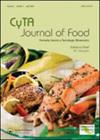INGENIERÍA GENÉTICA E INDUSTRIA AGROALIMENTARIA: VENTAJAS E INCONVENIENTES GENETIC ENGINEERING AND FOOD INDUSTRY: ADVANTAGES AND INCONVENIENCES EXEÑERÍA XENÉTICA E INDUSTRIA AGROALIMENTARIA: VENTAXAS EINCONVINTES
IF 2
4区 农林科学
Q3 FOOD SCIENCE & TECHNOLOGY
引用次数: 1
Abstract
Abstract Resumen Resumo Nowadays biotechnology allows to perform accurate changes on the genetic material of organisms, being a very important tool in food industry. However just a few recombinant products can be found in the market, as a result of the social repulse against these kind of foods. According to the Community Normative, it is necessary to evaluate the safety for human being and environment security previous to introducing a recombinant food into the market. In this work, the recommended protocols for several organisms to attend this evaluation on a rational way are reviewed. These protocols are fundamentally based on the SAFEST elements (Safety Assessment of Food by Equivalence and Similarity Targeting). Different studies about recombinant foods attended by different groups are also summarized. La biotecnologia actual permite hacer cambios precisos en el material genetico de los organismos, lo que se traduce en una herramienta muy importante para la industria alimentaria. Sin embargo, en el m...如今,生物技术可以对生物体的遗传物质进行精确的改变,是食品工业中非常重要的工具。然而,由于社会对这类食品的排斥,市场上只能找到少数重组产品。根据欧盟规范,在将重组食品引入市场之前,必须对其对人类和环境的安全性进行评估。本文对几种生物合理参加评价的推荐方案进行了综述。这些协议基本上是基于最安全的要素(等效性食品安全评估和相似性目标)。综述了不同群体对重组食品的不同研究。生物技术实际上允许对生物的物质遗传进行精确的改造,而不是对生物的物质遗传进行精确的改造。禁运,甚至我…
本文章由计算机程序翻译,如有差异,请以英文原文为准。
求助全文
约1分钟内获得全文
求助全文
来源期刊

CyTA - Journal of Food
农林科学-食品科技
CiteScore
4.70
自引率
0.00%
发文量
37
审稿时长
3 months
期刊介绍:
CyTA – Journal of Food is an Open Access journal that publishes original peer-reviewed research papers dealing with a wide range of subjects which are essential to the food scientist and technologist. Topics include: chemical analysis of food; additives and toxins in food; sensory, nutritional and physiological aspects of food; food microbiology and biotechnology; changes during the processing and storage of foods; effect of the use of agrochemicals in foods; quality control in food; and food engineering and technology.
 求助内容:
求助内容: 应助结果提醒方式:
应助结果提醒方式:


